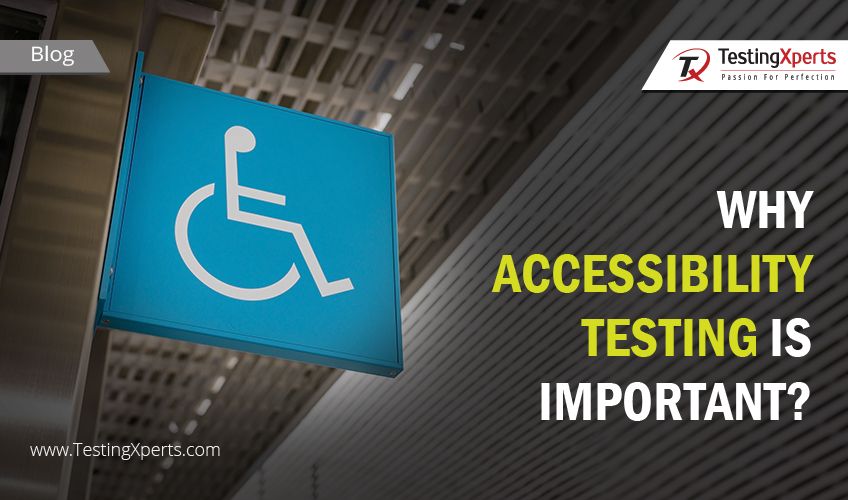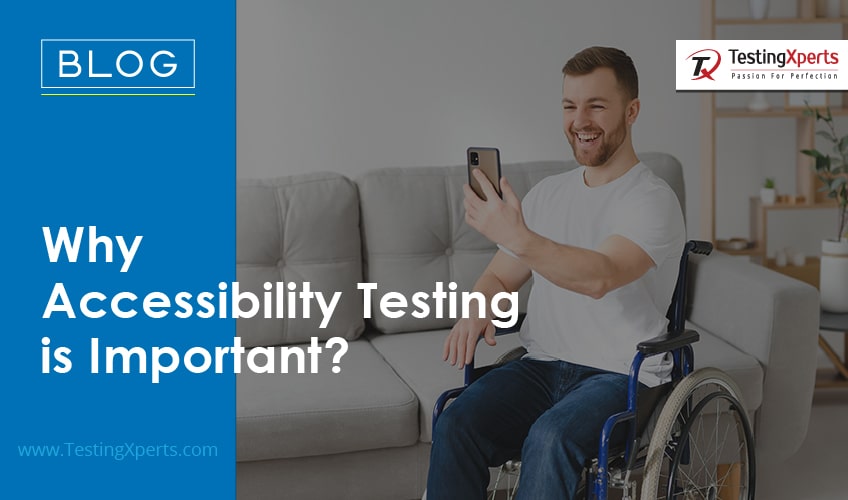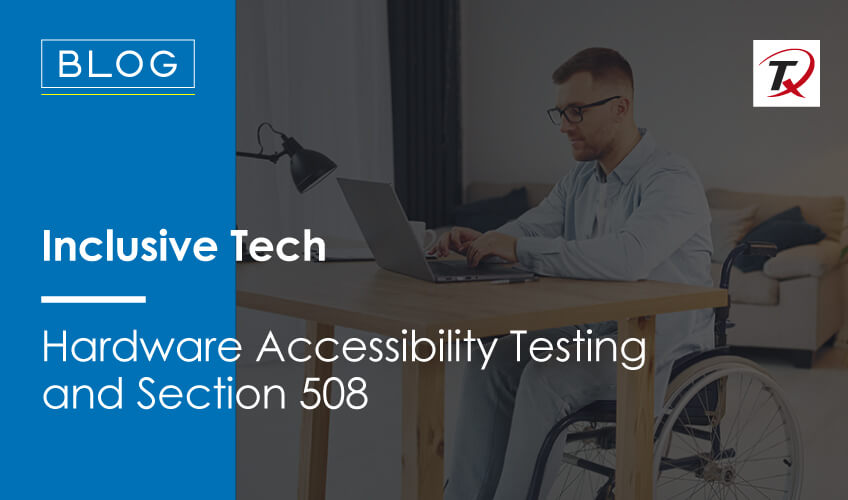
In today’s digital era, tech innovations are major in scaling business operations. From smartphones to smart homes, reliance on technology is increasing daily. However, as technology evolves, businesses must ensure that these innovations are accessible to everyone, including those with disabilities. For individuals with disabilities, interacting and accessing some hardware devices could be challenging. This is where hardware accessibility testing comes in. The hardware going through accessibility testing could be a simple monitor without physical controls, a multifunctional printer with integrated keywords and a screen, and other accessories. It helps ensure that physical devices are accessible by everyone, regardless of ability.
Businesses must address certain considerations when dealing with people with disabilities. To develop an inclusive hardware solution, they must fulfill parameters such as Section 508 of the Rehabilitation Act, CVAA, etc. The quality accessibility test shows how people with disabilities access the hardware in the test. Businesses can gain valuable insights about accessibility defects and/or limitations, as well as workarounds.
Today, in this blog, we will discuss key considerations and hardware accessibility testing methods that would allow organizations to develop fully accessible hardware solutions.
What is Hardware Accessibility Testing?
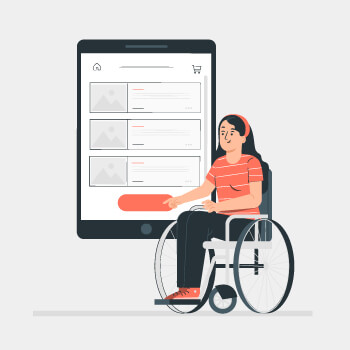
What is accessibility testing? It is the practice of ensuring that an EIT (electronic and information technology) or ICT (information and communication technology) product or service is usable by as many people as possible. It helps ensure that the product or service is accessible to people with disabilities, such as hearing problems, vision impairment, physical or cognitive conditions, etc.
Hardware accessibility testing, in this regard, involves a thorough analysis of the product’s hardware accessibility to ensure it complies with Section 508 accessibility guidelines and other standards, such as CVAA. The hardware includes various devices like televisions, computers, smartphones, keyboards, tablets, etc. The goal here is to identify and address accessibility challenges that prevent individuals with disabilities from using the device.
It allows QA teams to assess hardware physical design factors such as size, button placement, and weight to ensure compatibility for users with disabilities. For example, is the device easily operable by users with limited hand mobility? Can users with visual impairments easily access buttons?
Testers must ensure that all the device features and functionalities are accessible to users with disabilities, including voice recognition, screen readers, and input methods like switches or joysticks.
The user interface is the core component of accessibility. Testers evaluate the layout and usability of on-screen menus, navigation paths, and icons to ensure they are intuitive and compatible with assistive technologies.
Why Hardware Accessibility Testing Matters?

Imagine a person with a motor disability struggling to operate a touch screen with tiny buttons or a person with low vision struggling to read a control panel with small labels. These are just a few examples of inaccessible hardware hindering users from accessing information and communication. This is why hardware accessibility testing is necessary to develop technology that serves everyone, including users with disabilities. It goes beyond simply meeting a few requirements. Businesses can create a more inclusive environment where everyone can benefit from technology. Ignoring it can lead to exclusion, legal consequences, and missed business opportunities. Here’s why hardware accessibility testing matters:
Legal Compliance:
Almost every country has laws mandating accessibility to technology. In the US, Section 508 mandates that EIT or ICT be accessible to people with disabilities. Hardware falls under this requirement, making accessibility testing crucial to maintaining compliance.
Inclusivity:
Accessibility testing allows businesses to create products that everyone uses. Considering the needs of people with disabilities would allow businesses to design more inclusive hardware.
Market Growth:
Making hardware accessible opens up new market opportunities for businesses. Over 1.3 billion people worldwide have disabilities, representing 16% of the world’s population. This represents the growing demand for inclusive design, and by prioritizing accessibility, businesses can tap into this expanding market segment.
Corporate Social Responsibility (CSR):
Prioritizing accessibility reflects positivity in a company’s brand. It shows that the business regards inclusivity and is committed to serving every community member. It helps build brand reputation and customer loyalty. By ensuring everyone can access the digital world, they can facilitate a more inclusive society.
Optimize User Experience:
Accessibility features improve user experience for everyone. For example, voice controls and screen reader features were designed for users with disabilities, but they are now popular among all users for their convenience. Conducting accessibility testing would ensure these features are optimized for every user.
Understanding Section 508 Requirements

Section 508 of the Rehabilitation Act (29 U.S.C. 794d) mandates that all EIT or ICT developed, procured, maintained, or used by the federal government be accessible to people with disabilities. It is the technical requirements and criteria used for measuring conformance within this law. This law ensures that users with disabilities have the same access to information and data as normal users. Complying with Section 508 is necessary for businesses to ensure their hardware products’ accessibility. Here are some key requirements to consider when testing hardware accessibility:
Keyboard Interface:
The law requires companies to ensure their hardware product is operable using a standard keyboard. It ensures users who cannot use a mouse or touch screen due to physical disabilities can easily access functionalities through keyboard controls, making it an essential alternative for accessing devices.
Physical Characteristics:
The hardware’s buttons and controls should be large enough to be easily accessible by users with limited dexterity. This will allow users with motor disabilities to operate the device without unnecessary strain.
Contrast and Labeling:
The controls and indicators should have clear visual contrast and tactile identification. High contrast between the background and the controls would help users with visual impairments. Tactile labels will assist those who rely on touch to identify functions.
Compatibility with Assistive Technology:
Hardware should work seamlessly with assistive technologies such as screen magnifiers and readers. This will ensure that users dependent on such technologies can efficiently interact with the product and access all its features and functions.
Physical Reachability:
Hardware controls and ports should be within an accessibility range for wheelchair users or those with limited mobility. This means placing the device at the appropriate height and within easy reach to ensure users can operate it independently.
Testing and Evaluation:
Compliance with Section 508 requires thorough testing and evaluation. This involves using QA tools and methods to assess tech accessibility and ensuring it remains accessible as it updates and evolves.
Hardware Accessibility Testing Methods
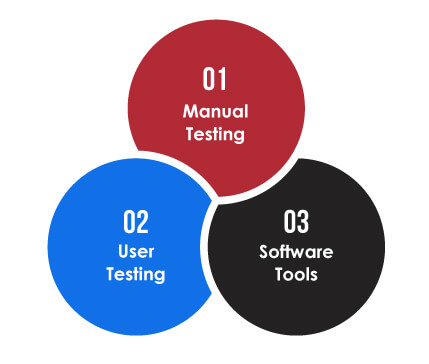
Hardware accessibility testing methods involve a series of evaluations and tests to identify and address potential issues. These methods are necessary to ensure devices are usable by every user. Implementing the following testing methods would allow businesses to create more inclusive and user-friendly products:
Manual Testing:
It involves physically interacting with the hardware to assess its usability for users with different disabilities. QA teams perform tasks using the hardware and replicate how impaired users might interact with it. For instance, they might test screen readers, voice recognition software, or input devices to confirm compatibility and usability.
User Testing:
Users with disabilities are involved in testing as beta users to provide invaluable insights into real-world usability issues. This testing method allows QA teams to observe how users interact with the hardware. Feedback from these users helps uncover practical challenges and ensure the hardware meets the necessary requirements. It can also help identify issues that might go unnoticed during automated testing.
Software Tools:
Automated testing tools would enable businesses to identify accessibility issues overlooked during manual testing. These tools quickly analyze common obstacles in the hardware, such as color contrast issues and screen reader compatibility. Leveraging software tools alongside user and manual testing supports a comprehensive approach to identifying and resolving accessibility issues.
How Can Tx help with Hardware Accessibility Testing?

At Tx, we believe in a world fair for everyone and ensuring that your hardware is accessible to all users, including those with disabilities. Our team of accessibility experts is trained and has extensive knowledge of regulatory compliance and guidelines related to hardware accessibility. With the hardware provided, we will perform detailed testing to check compliance and provide a detailed report of the findings and methods to improve them. Our approach to hardware accessibility testing includes the following:
• Identify key accessibility requirements
• Create a comprehensive accessibility test plan
• Test compatibility with assistive technologies
• Document findings and recommendations
• Retest the issues after resolving them
• Issue VPAT
• Provide training and awareness
Summary
Hardware accessibility testing is necessary to create a more inclusive world where people of all abilities can access technology. Businesses need to follow Section 508 guidelines and utilize available resources to develop hardware solutions that could bridge the gap between the abled and disabled. It would help unlock the full potential of tech innovations. To do so, businesses should partner with a reliable accessibility testing services provider that utilizes the latest tools and methodologies to help create more inclusive solutions.
Discover more
Get in Touch
Stay Updated
Subscribe for more info



